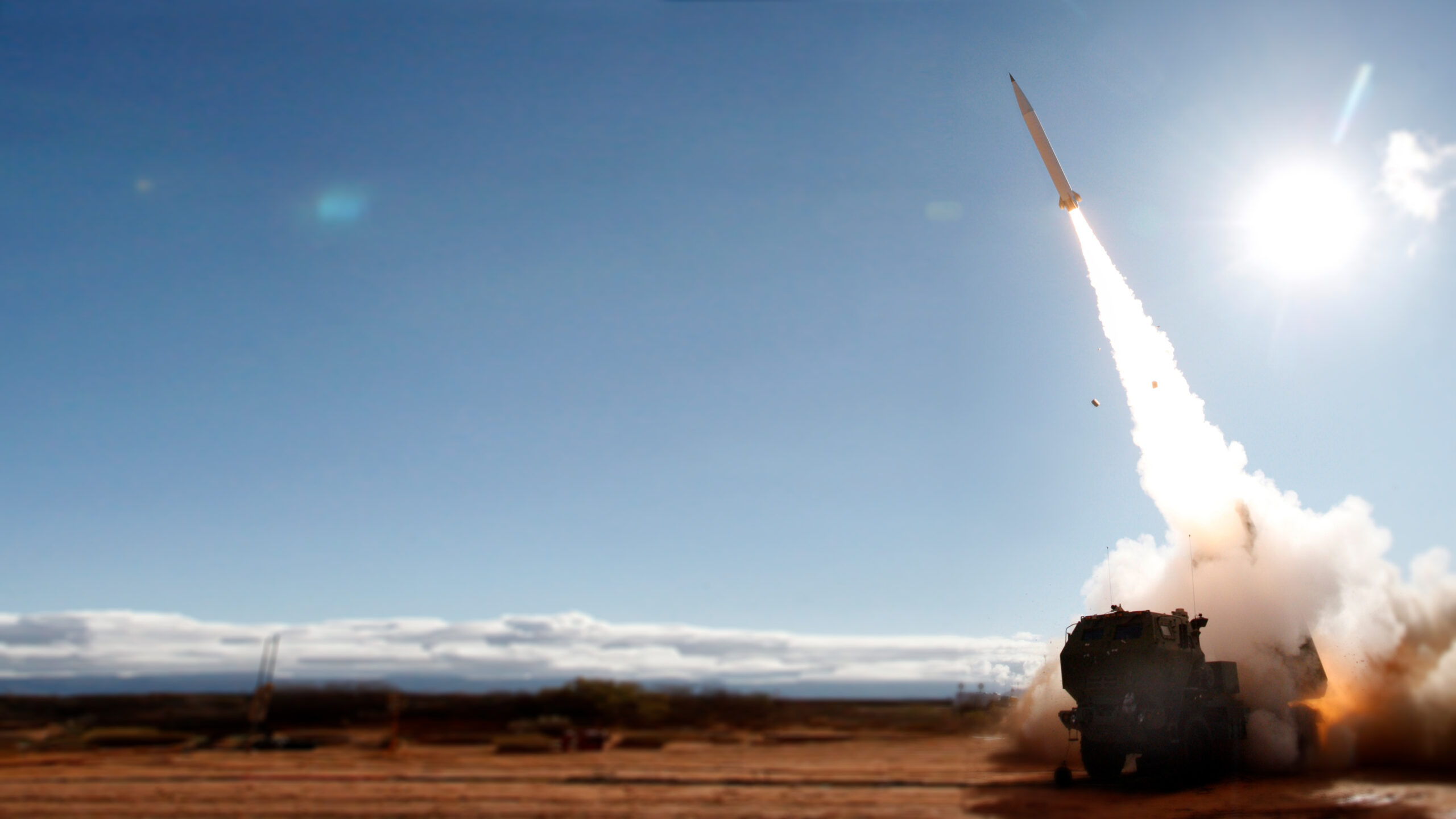
The Army’s PrSM weapon is seen during a test launch. (Lockheed Martin)
WASHINGTON: The second generation of the Army’s Precision Strike Missile program will under early operational capability (EOC) in fiscal 2027, according to the Army’s FY23 budget documents.
The second increment of the Army’s new surface-to-surface missile will be equipped with technology to attack mobile or relocatable ground or maritime targets, with future planned increments to set to extend the range and increase lethality, the budget books state.
Soldiers are slated to receive the first increment of the Lockheed Martin-made missile in the fourth quarter of FY23, the budget documents show, as part of the Army’s plan to spend a total of over $3 billion on the program over the next five years. The first increment has completed six flight tests and is currently in the engineering and manufacturing development phase.
The PrSM program is meant to replace the Army Tactical Missile System, which has a maximum range of 300km, or 186 miles. PrSM was originally designed to fly up to 499km in order to stay under the constraints of the Intermediate-Range Nuclear Forces Treaty, which the US exited in 2019; the Army has now flown the missile beyond that distance — although exactly how much farther it has gone is a little unclear.
The Precision Strike Missile program is one of the Army’s 35 signature modernization programs and is a key program within the Long-Range Precision Fires upgrade portfolio, its top modernization priority. The Long-Range Precision Fires priority also includes the Army’s Mid-Range Capability, Long-Range Hypersonic Weapon and Extended Range Artillery Cannon.
Budget documents show that the Army plans to spend about $213.2 million on 120 Precision Strike Missiles in FY23. Between FY23-27, the documents show that the Army will spend $1.8 billion on procurement of 1,086 missiles, peaking in FY26 with $439.9 million on 266 missiles.
RELATED: Inside the Army’s Plans To Grow Artillery
The Army’s acquisition objective is 3,986 missiles, according to budget documents. The first increment missiles are scheduled for delivery in FY23 under urgent materiel release, with budget documents showing that the first two missiles will be delivered in July next year. A limited user test of two missiles is scheduled for the fourth quarter of FY23.
A full-rate production decision and initial operational capability decision are planned for FY25.
PrSM’s research, development, test and evaluation account totals about $1.2 billion over the next five years. The Army asked for $259.5 million for FY23 and hovers just about $237 million over the following four fiscal years.
A breakdown of the RDT&E budget shows that the service asked Congress for $170 million for the first increment of the missile, up from $132 million last year, which would continue to fund the engineering and manufacturing phase. The Army attributed the increase to software development and testing costs required to meet a PrSM fielding in the fourth quarter of FY23.
The second increment is funded at approximately $88.6 million, up from $49.2 million in FY22. The increase for increment two of PrSM will fund the integration of a multi-mode seeker developed by the Combat Capabilities Development Command’s Aviation & Missile Center that will allow the the missile to target ships or mobile ground targets.
Increment two prototype flight tests are scheduled between the fourth quarter of FY24 and the first quarter of FY26, according to budget documents. The budget request includes an ask of about $12.2 million for the multi-mode seeker, formally called the Land-Based Anti-Ship Missile seeker.
The documents state that the service plans to complete demonstrations of the seeker in a surrogate missile system in FY22. For FY23, the service plans to complete demonstrations and will “mature concepts for re-factoring multi-mode seeker technologies into PrSM form factor.”






















